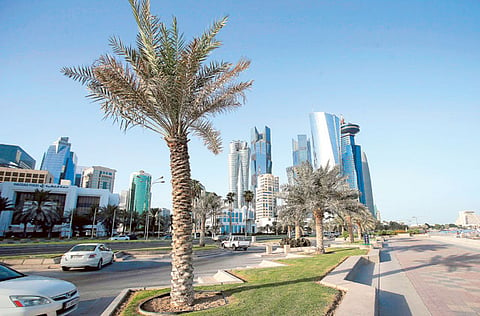GCC needs faster diversification to cope with slowing oil prices
Global oil glut, emerging markets' slowdown to hurt GCC oil revenues

Dubai: The rapid expansion of shale oil production in the US and its impact on the global oil prices are pushing Gulf countries to speed up their economic diversification efforts, according to a regional economic outlook report by ICAEW and Cebr (The Centre for Economics and Business Research).
The US is set to overtake Russia next year to become the world’s second largest producer of oil, according to the International Energy Agency (IEA). To date, the US’s reduced appetite for imported oil has been countered by growing demand in emerging markets.
With the emerging economies slowing, however, demand from these markets too is likely to slacken in the short term. With a greater share of exports now being sent to these economies, Middle Eastern oil producers are increasingly exposed to the risk of emerging market slowdown.
Skill shortages
In the medium term, the spread of shale technology means global oil supply is likely to rise. While GCC governments have recognised the need to diversify away from oil, they face a challenge in terms of skill shortages. “To compete in skills-intensive industries like engineering or financial services, economies need access to a highly-skilled workforce. Currently, statistics suggest the GCC is lagging behind other developed economies in terms of education,” said Peter Beynon, Regional Director, ICAEW Middle East.
With the possibility of the US restarting oil exports sometime between now and 2018, the GCC’s reliance on exports to emerging markets are likely to become more important.
“Twenty years ago advanced economies accounted for nearly three quarters of all goods sold overseas by the GCC. Now fewer than half of all goods exported go to advanced economies, and nearly the same again to emerging markets. The trend to increased trade with emerging markets is likely to continue,” said Douglas McWilliams, Chief Economist and Executive Chairman of Cebr.
While shale is just one side of the oil supply story, economists say oil prices are likely to be undermined further by the softening of sanctions against Iran. “While the official removal of sanctions will involve years of political wrangling, efforts to block Iranian access to international markets are likely to become less effective over time. As relationships between the US and Iran appear to have softened slightly in recent months, we expect that some Iranian oil will come back on stream by 2017,” said McWilliams.
Expansion in global oil supply, together with US shale production, is likely to push average oil prices below $100 a barrel from 2015.
According to the IMF estimates, majority of countries in the region now need an oil price in excess of $90 to balance their budgets. The IMF sees potential fiscal deficits in all oil- exporting countries from the region except Kuwait and the UAE by 2015 in the absence of a fiscal policy adjustment. Even a smaller decline in oil prices under plausible scenarios of slower growth in emerging markets would also have a material effect on oil prices and fiscal balances of GCC oil exporters, the IMF said in its latest regional economic outlook.
Sign up for the Daily Briefing
Get the latest news and updates straight to your inbox

